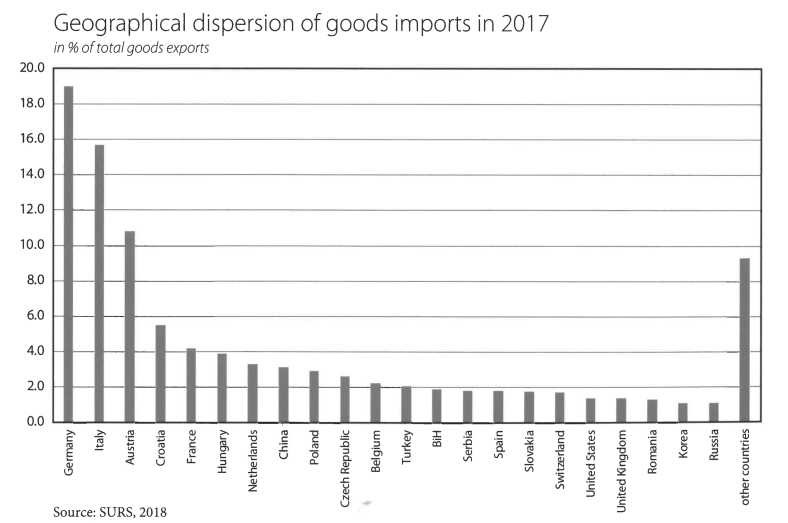In 2017, the buoyant domestic market saw accelerated growth in imports of goods and services.
The growing purchasing power of households gave rise to imports of consumer goods, an upswing in a new investment cycle accelerated imports of investment products, while the fast growth in industrial production substantially increased imports of intermediate goods.
With the rising international trade, imports of transport services were up as well. In relation to broad-based economic growth, the import of business services was also on the rise, while an upswing in construction investment resulted in rapid growth in imports of construction services.
In 2017, growth in total real imports exceeded 10%, with imports of goods up by 10.7% and that of services by 6.6%.
The geographical and product structure of goods imports is versatile. In 2017, Germany, Italy and Austria were again the biggest trading partners for imports of goods, together representing over 45% of overall goods imports. Despite this, imports remained geographically dispersed as 19 other countries had at least a 1% share in Slovenias total goods imports, while the rest of the world still represented more than 9%.
Slovenia
imported 66 groups of products in 2017.[1]
Among them, road vehicles kept the highest share of close to 14%, followed by
electrical machinery, apparatus and appliances (6.8%), mineral fuels, mineral
oils and products (6.5%), medicinal and pharmaceutical products (4.6%), general
industrial machinery and equipment (4.4%), and iron and steel (4.3%).
[1] According to two-digit SITC Rev.4 classification

